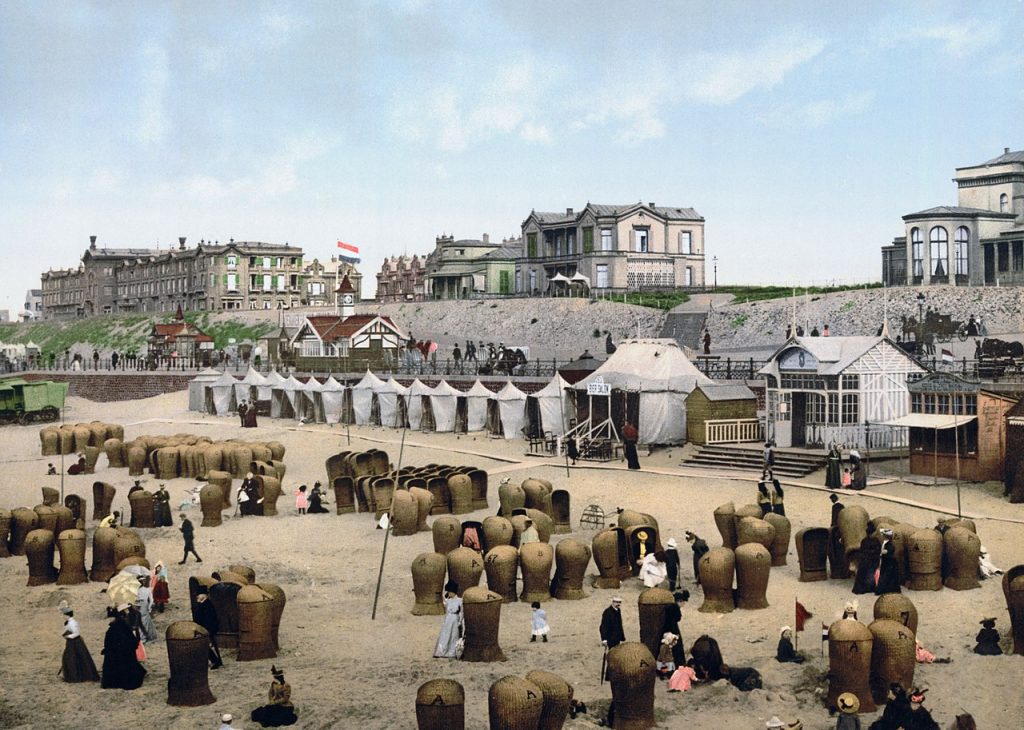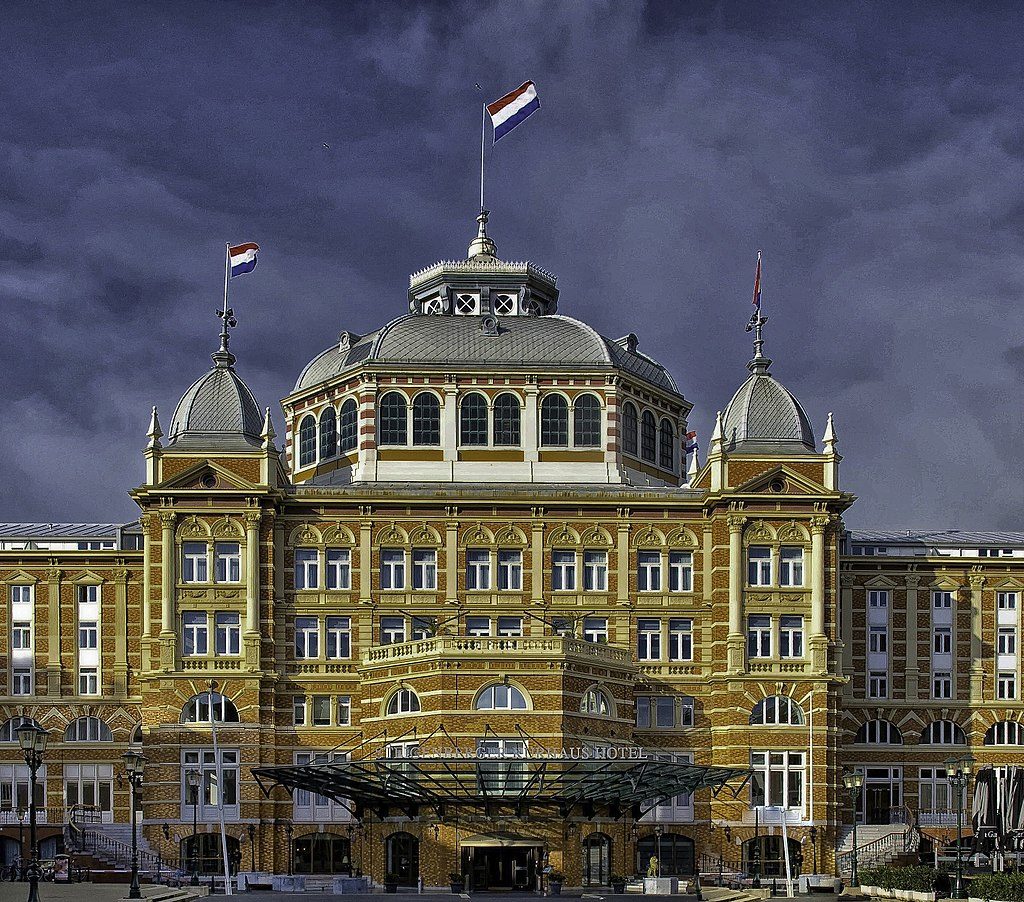A Beach Celebrates Itself: Scheveningen is 200 years old! Posted by Sten on Aug 6, 2018 in Culture, Dutch Vocabulary, News
Something special is going on this zomer (summer): It is ongelooflijk heet (incredibly hot)! So everybody wants just one, simple thing: Afkoeling! (cooling down!). The Dutch search it in the cool water of the Noordzee (North Sea), and many at the strand van Scheveningen (beach of Scheveningen). Apart from the heat, something else is special: The Scheveningen beach turned 200 years old in 2018!
Sinds 1818
Scheveningen is actually not the name of the strand (beach), but a stadsdeel (city district) of Den Haag (The Hague). Because the beach became so famous, the name is now synonymous with the strand.
The oldest records that supposedly refer to the small fisher’s town are from the 12de eeuw (12th century). It expanded later, perhaps due to the high vraag (demand) for vis (fish) of the nobility in the upcoming Den Haag at the time. However, the strand was established only in 1818 – so what is behind that? What determines the establishment of a beach?
In 1818, the company Jacob Pronk Nz. opened the first badhuis (bathhouse), which was a small houten gebouw (wooden building) with a wachtkamer (waiting room) and vier badkamertjes (four small bathrooms) with a uitzicht (view) onto the sea. In 1820, this was transformed into a stone structure. This was then bought by the gemeente (municipality) Den Haag and turned into the Stedelijk Badhuis (Municipal Bathhouse). It was then turned into a hotel and then the Kurhaus was built, which stood the test of time and is still a hotel today. The name Kurhaus means something like “spa house” or “health resort” in German, and translated to Dutch would be kuurhuis. It is not entirely clear why the name of the building is German, but this may be related to the fact that the architects Henkenhaf and Ebert were German.
And the establishment of this first badhuis (bathhouse) made the beach of Scheveningen a badplaats (bathing place), which to this day draws many visitors from all over the world!
200 years Scheveningen – een jaar lang feest!
The anniversary of the Scheveningen is celebrated with many verschillende (different) evenementen (events), from the finish of the Volvo Ocean Race to the Red Bull Knock Out Race to the International Fireworks Festival. Here you can find the complete schedule in Dutch. And here in English.
The year-long feest (celebration) is onderverdeeld (sub-divided) into five thema’s (themes):
– Historie aan zee (history at the sea) displays history on badcultuur (bathing culture) and badmode (swimwear).
– Stad aan zee (city at the sea) connects the beach with the binnenstad (inner city) of Scheveningen.
– Elke dag aan zee (every day at the sea) shows why you could visit Scheveningen every single day of the year.
– Toekomst aan zee (future at the sea) looks forward to (possible) developments of the beach town.
– Groots aan zee (big at the sea) with large-scale public events.
It all started with the nieuwjaarsduik (New Year’s dive), on January 1. Now that is refreshing!
So there should be something for each and every one!
Are you going to go to the beach of Scheveningen? Have you been? Would you like to visit? Let me know in the comments below!

Build vocabulary, practice pronunciation, and more with Transparent Language Online. Available anytime, anywhere, on any device.





